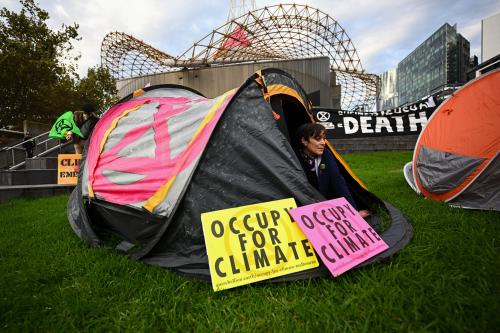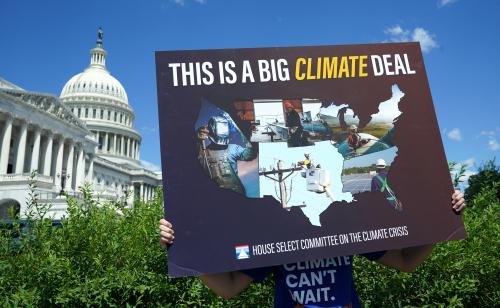Summary
The opportunity is now at hand for the United States to build a new, comprehensive, and ambitious national climate policy strategy for the United States and to reengage with the international community to address climate globally. Such a strategy would catalyze a broad transformation that delivers a vibrant economy and broadly shared benefits while also delivering significant emissions reductions that support scientifically informed global climate goals. Even as the executive branch has in recent years wrought damage to federal policies and international engagements, actions across the country from subnational leaders (in states, cities, businesses, and others), combined with quickly evolving clean technology market trends and shifts in public opinion, have built a stepped-up basis for accelerating action nationally from the bottom up. The U.S. is therefore in a strong position for a rapid and vigorous reengagement by the federal government.
A central component that links the domestic climate policy strategy to support higher international action from other countries is the climate target that the U.S. will communicate as part of the Paris Agreement, called the Nationally Determined Contribution or NDC. This entails developing a new, “all-in” climate policy strategy that fuses new federal actions from the executive and potentially Congress (for example, as part of a stimulus and recovery package), with existing and new actions from an expanding set of subnational actors such as states, cities, businesses, and investors. Importantly, the NDC process also creates a critical opportunity to integrate key stakeholders—to gather input, solicit feedback, generate broader understanding of the opportunities and constraints for action, and to catalyze greater action from subnational actors. Such an integrated process can not only build a more broadly rooted strategy with more widely understood domestic benefits and long-term robustness, but also can increase international confidence and thereby create leverage for other countries to do more as well.
This paper reviews the global and U.S. experience of such strategies from the past six years, and sets forth a set of recommended features of a process to create a new national strategy and NDC, focusing on national long-term emissions strategies for midcentury, the first round of NDCs in advance of the Paris negotiations, and recent experience with U.S. subnational actors. It then provides four recommendations for building an open and inclusive process to build a U.S. national strategy and target; inviting a parallel process of formal and informal assessment and setting ambition from the subnational community; and linking between these two. Such a process will provide the best chance of realizing both maximum ambition and maximum action toward a new climate strategy for transformation at home that, through the NDC, can leverage new action globally.
Download the full working paper







